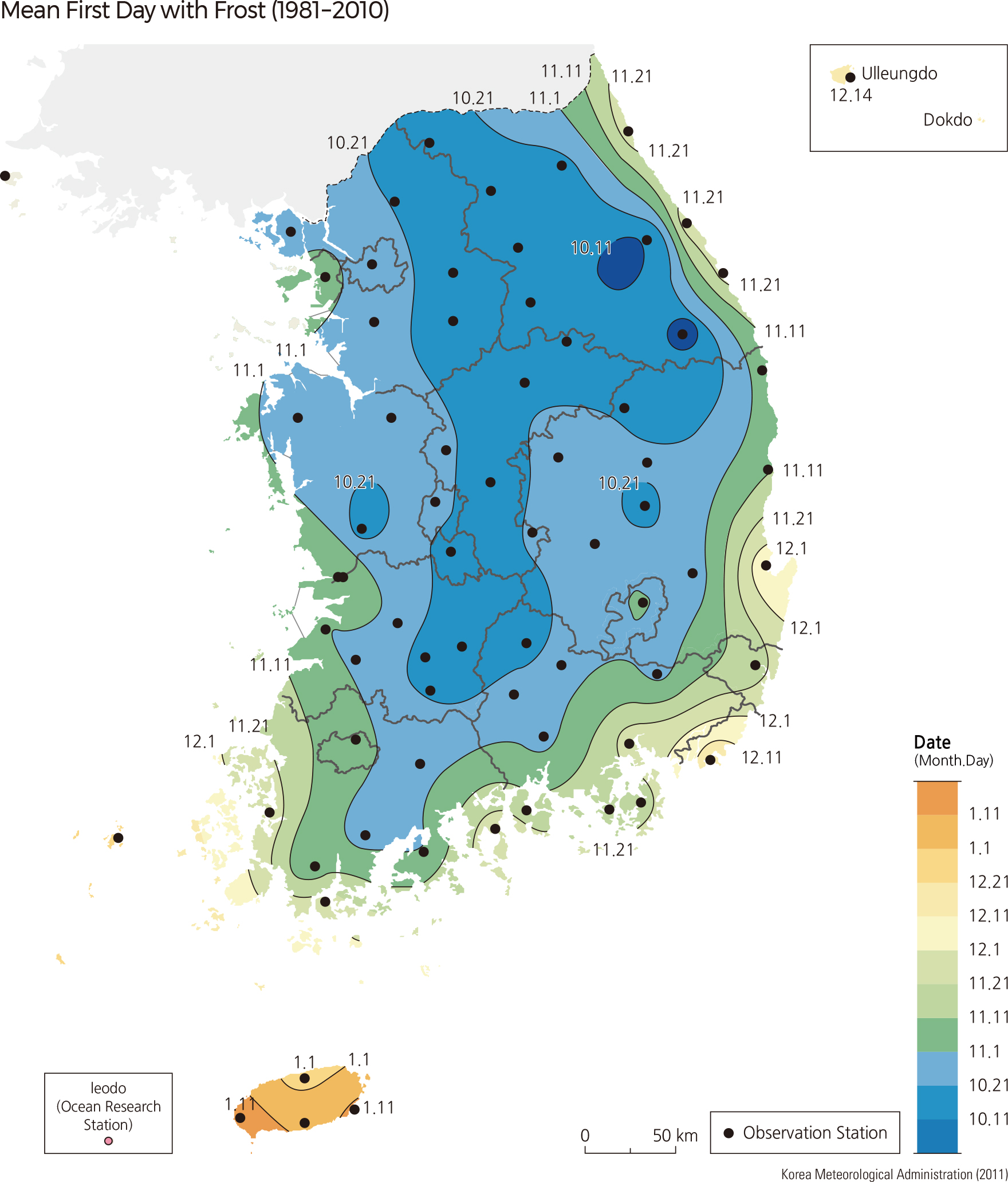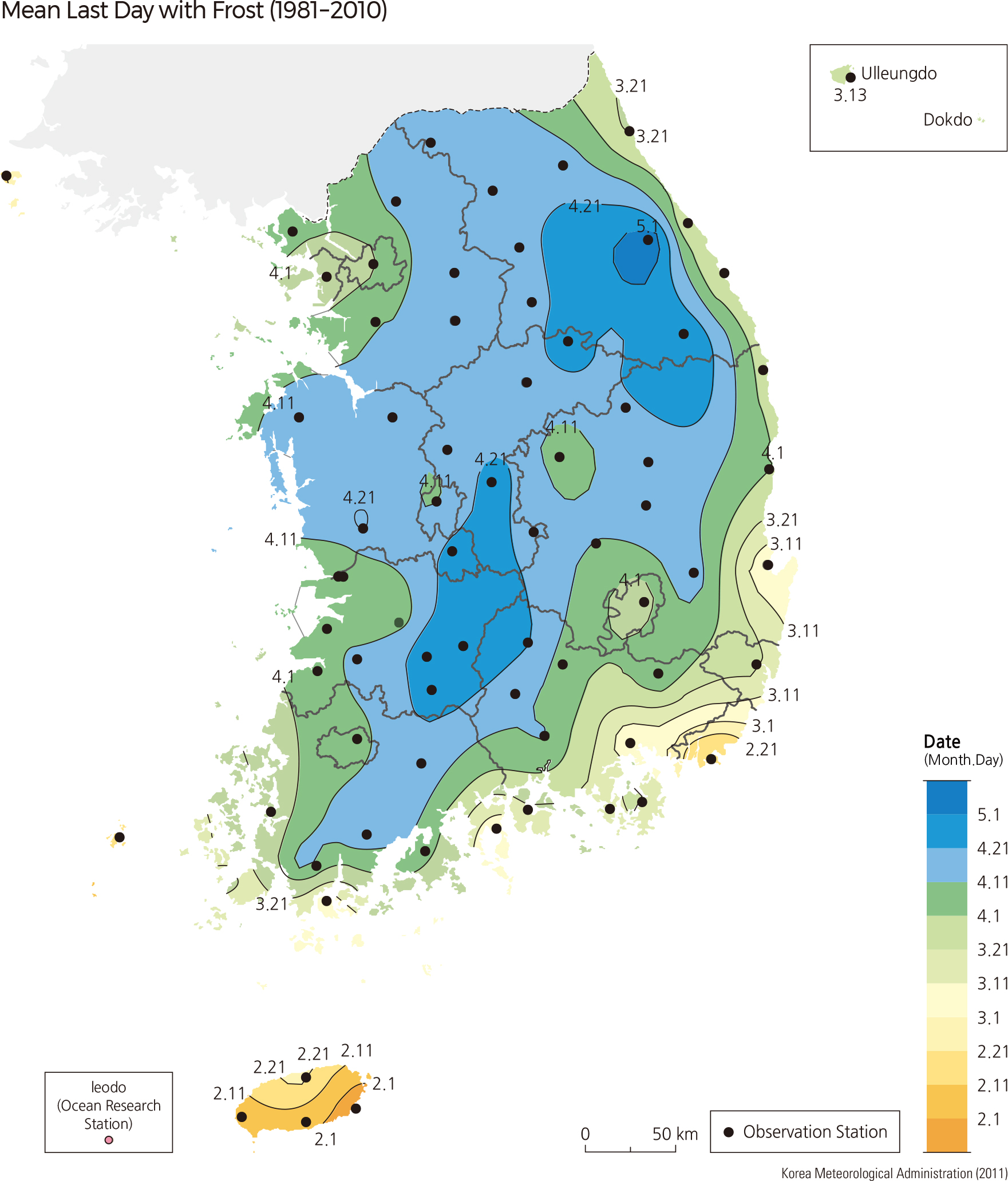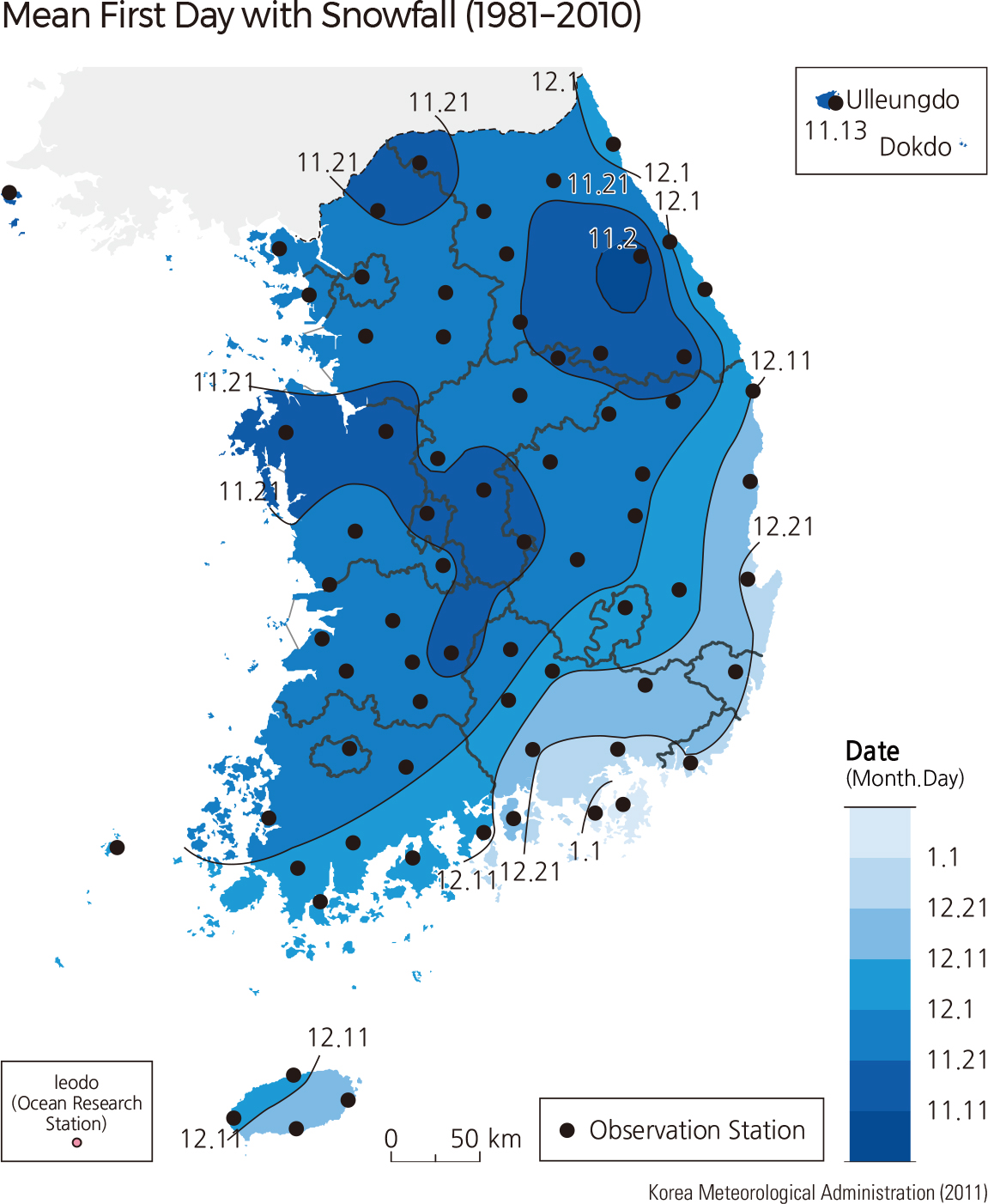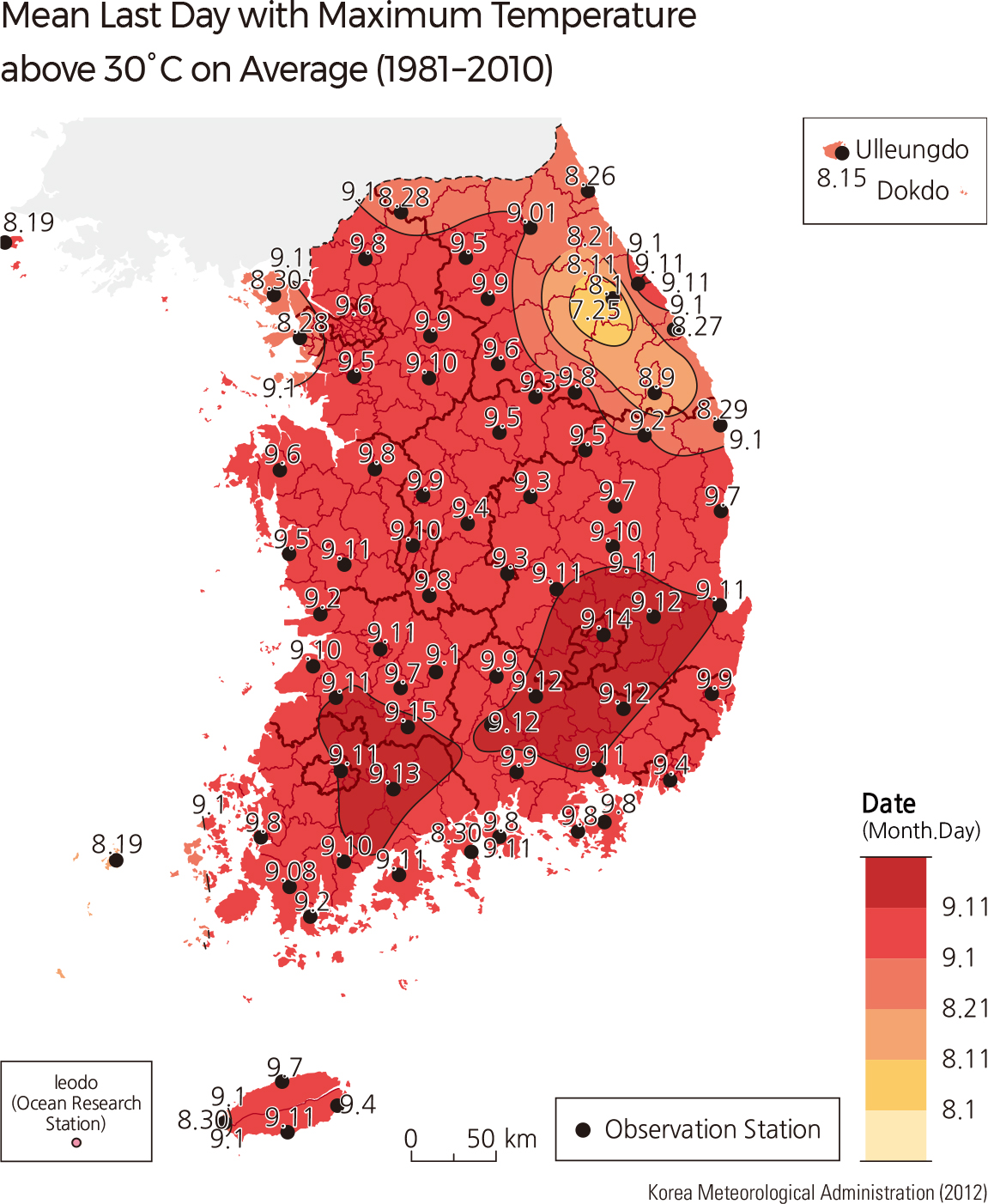English II 2020
The first frost of the season occurs during October in most parts of the Korean Peninsula. However, some parts of the coastal areas and the southern region experience frost between November and December, with Jejudo, the last, in January. The last frost occurs during April in most places. In general, the later the frost begins, the earlier the frost stops forming. For instance, the earliest days with the last frost occur around January 27 in Seongsan, followed by Seogwipo (February 2), Gosan (February 5), and Busan (February 8). The latest frost occurs in Daegwallyeong around May 9, followed by Bonghwa, Jangsu, and Taebaek (all April 30).
The first snow of the season falls around November on average in most parts of the Korean Peninsula. On average, the first snowfall occurs in Daegwallyeong (November 2), followed by Taebaek (November 11), Ulleungdo (November 13), and Baengnyeongdo (November 16). The latest first snow occurs in Geoje (January 9), followed by other southern regions, Tongyeong (January 3), Pohang (December 23), and Changwon (December 22). In most areas, the last snow of the season is seen around March. The earliest day with the last snow occurs in Geoje (February 16), followed by Miryang (February 19), Tongyeong (February 21), and Changwon (February 22). Daegwallyeong experiences snow until April 17 on average.
The first date with maximum temperature exceeding 30˚C occurs in May or June in most regions. The regional difference in the first date with maximum temperature exceeding 30˚C is greater than that in the first date with maximum temperature above 25˚C. Daegu (May 9) experiences it the earliest, followed by Pohang (May 12), the southern inland areas such as Yeongcheon and Yeongdeok (May 14), and the eastern coastal areas. The latest mean first date with maximum temperature greater than 30˚C occurs in Baengnyeondo (August 2), followed by the southern coastal areas such as Heuksando (August 1), Seongsan (July 22), and Yeosu (July 20). The mean first date of maximum temperature above 30˚C is earlier in coastal areas than in inland areas.
The last date of maximum temperature above 30˚C occurs around September in most areas. The earliest last date occurs in Daegwallyeong (July 25), followed by Taebaek (August 9) and Ulleungdo (August 15). The latest date for a maximum temperature greater than 30˚C occurs in Namwon (September 15), followed by the southern inland areas such as Daegu (September 14) and Suncheon (September 11). |





